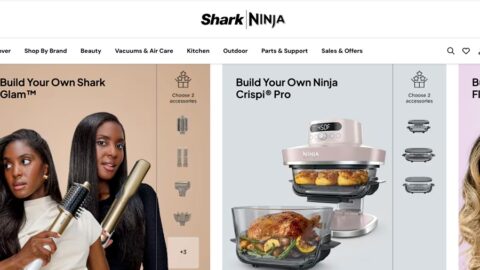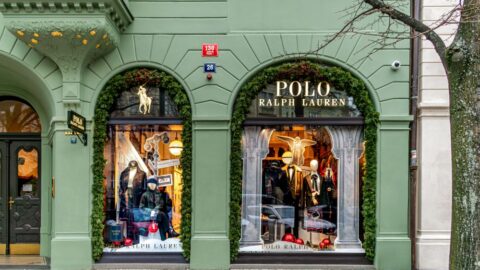If it’s true that we live in an attention economy (wait just a sec, I’m getting an email/text/Slack/LinkedIn alert…okay, I’m back), then retailers — both online and brick-and-mortar — need new tools to not just attract customers but also to keep them engaged. Accomplishing this feat requires more than the familiar mantra of right product, right price, right location and right time: it requires an emotional connection via storytelling, nostalgia and a sense of brand history, according to Ryan Harmon, President and Chief Creative Officer of Zeitgeist Design & Production.
Zeitgeist specializes in what it calls UX-IRL: User experiences in real life, including immersive theme parks and attractions as well as experiential retail. The company, in operation for 14 years, boasts clients including Walt Disney Imagineering (where Harmon himself worked for seven years), Sea World, Hershey Park and Universal Creative. He discussed the parallels between retail and theme park-style entertainment and what the former can learn from the latter.
Retail TouchPoints (RTP): How do you define customer engagement?
Ryan Harmon: Customer engagement is about creating a place where people feel an emotional connection or tie. It’s all about “What do I feel in terms of the story being told here?” Some of the most popular and longest-lasting attractions have stories: Let’s explore a haunted house, let’s slide down the Matterhorn, let’s fight pirates. There needs to be that emotional element that touches me; it could be through nostalgia, but it has to tie into your psyche somehow.
It’s also about having a place that’s iconic, with things I aspire to do, that also looks cool and encourages me to come out and spend money. It needs to be designed in a way that’s fun and relaxing, to encourage me to return again and again.
RTP: How would that apply in a retail setting?
Harmon: It depends on what type of retailer you are. I’m perfectly fine going to Costco and it [having a bare-bones design] with products right out of the box, because I’m just there to get my stuff and save money.
In contrast, Banana Republic started with a pretty thick “story,” about Indiana Jones-style adventure — that was compelling to me in the 1980s. Also Miller’s Outpost [which eventually went out of business after changing its name to Anchor Blue] had Western-style facades and wood on the walls — and they also had the cool brands, so kids at school wouldn’t make fun of me. Retail needs a backstory or a mythology; if I go to a Noah’s NY Bagels it will have pictures of the family that makes it feel like I’m in a New York bagel place with a history.
We’re all searching for brands that we can identify with, and if you don’t have a mythology, you’re not relevant and people won’t feel something toward you. That’s important because retailers have to realize that they’re competing against a convenience factor and also reasonable prices online.
RTP: In this attention economy, how should retail spaces be designed to not just attract people but keep them engaged?
Harmon: We’ve done work for Rick Caruso, who has developed some of the popular outdoor malls in Southern California such as Palisades Village, The Americana at Brand and The Grove, and I learned a lot from him about how to create engaging experiences and keep people there. Rick has created these “town centers” that are safe places. They usually have a trolley, a fountain, al fresco dining, a lawn and places to sit, as well as programming like concerts and kids’ programs, a Santa house, an Easter house. It’s a place where you want to spend three or four hours, and if you do, you’ll likely get something to eat and drink and maybe do some shopping.
Once people are in a shop, you need to know what people’s expectations are, because you want to fulfill if not exceed them with some semblance of “Wow, this is cool.” For example, I have an 11-year-old daughter who loves Hot Topic, a retailer that has stayed very relevant [with its target audience]. My daughter rarely buys anything, but she likes to look, and your children do influence you, so I might end up making a purchase. They’ve done a good job with their identity and brand.
RTP: What other retailers do you think are doing a good job of creating these emotional connections and “stickiness”?
Harmon: Gideon’s Bakehouse was started by an entrepreneur, Steven Lewis, who has done an amazing job with a cookie store at Disney Springs in Orlando, Fla. The store has no windows and big heavy doors — it’s very dark and theatrical, reminiscent of Ollivander’s wand shop [from the Harry Potter books]. He created an environment that’s so engaging and it’s reflected in the names of the cookies, the way they look — it all might be Victorian, goth or magic — and he has also figured out how to work social media, with things like limited dessert releases and collectible trading cards.
He’s also been good about creating scarcity. The cookies aren’t baked at the shop and they’re sold on a first-come, first-serve basis, and there are limited edition items as well. Every time I’ve been there, there’s a queue; I’ve seen hundreds of people line up in the morning, because they do sell out. [There’s a seven-cookie-per-person limit, but that amounts to approximately three pounds of cookies.] He had been selling at farmer’s markets, but he’s mastered both the design and the guest experience with this store.
For other retailers, you have to find your niche. What does your brand or product represent? How do people identify with it? Your “story” doesn’t have to be literal, but it needs to be reflected in the way you decorate and name things, the way you market and use social media — it all comes together. Your story could just be, “We have super-low prices,” like Marshall’s or T.J.Maxx. Telling your story in multiple ways is important now, because for me to get up, get dressed and go out shopping, there has to be a reason.













